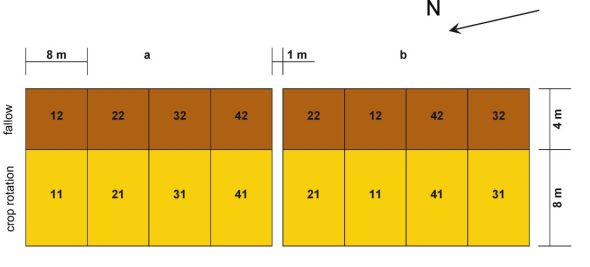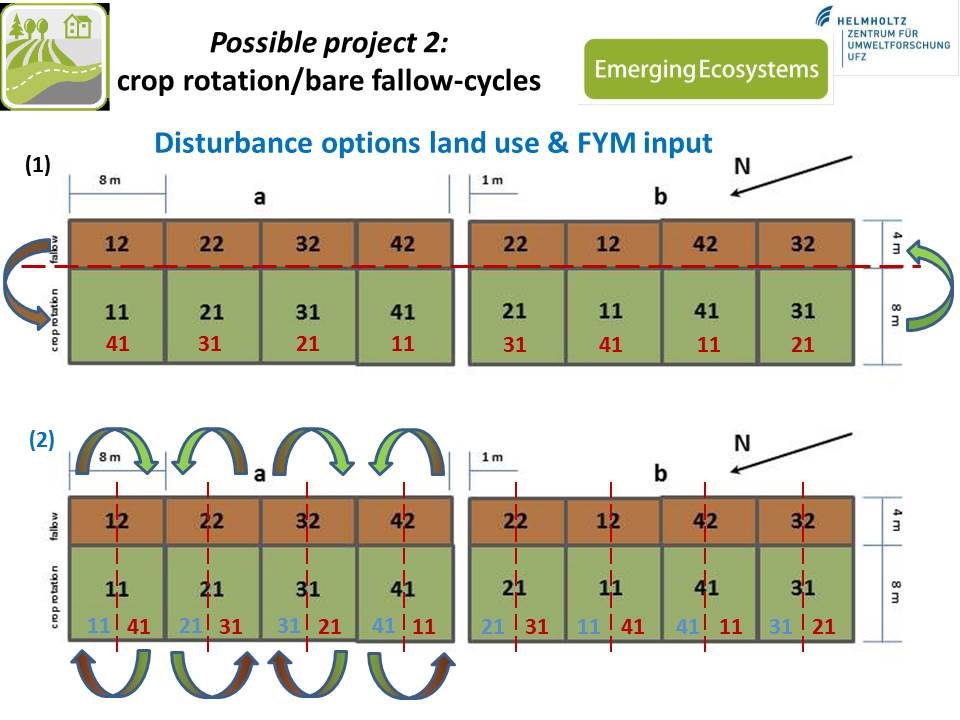Incremental Farmyard Manure Experiment
(Stallmist Steigerungsversuch)
Contact: elke.schulz@ufz.de
1983 Incremental Farmyard Manure Experiment Bad Lauchstädt was laid out and started by Körschens. Main objective of the trial was examining the long-term effect of extreme high doses of farmyard manure (FYM) application on yield, nitrogen uptake by crops and soil properties. The trial was laid out as is a two factorial block experiment in two replications:
Factor 1
organic fertilization every year in 4 increments:
1 - without FYM
2 - 50 t ha-1 FYM
3 - 100 t ha-1 FYM
4 - 200 t ha-1 FYM
Factor 2
land use in 2 increments:
1 - crop rotation
1984 – 1989 sugar beets – silo maize – winter wheat
1990 – 2007 sugar beets – potatoes – silo maize
2008 – 2013 potatoes – sugar beets – silo maize
2014 potatoes
2015 continued silo maize
2 - mechanical bare fallow

The size of each plot in crop rotation is 64 m²; in bare fallow 32 m².
What was done
- deep soil sampling (to 5 m depth) in 1992
- parameters measured: TC, TOC, TN, labile C and N, mineral N
- N balances
Results – labile C and mineral N
- accumulation of labile, readily decomposable OM up to 60 cm soil depth
- N source for plant
- risk for N dislocations to deeper soil layers & gaseous losses
- „land use“ effect was reflected in mineral N amounts
- higher amounts in bare fallow as compared to crop rotation
- in CR and all FYM treatments mineral N was transported only
up to 1m soil depth
- in BF most amounts of mineral N are placed in the 1 to 3m
- marginal differences in mineral N between CR and BF in 3 to 5m
Future potentials whithin POF III "Resiliencing"
"disturbance" options

Contact: elke.schulz@ufz.de
